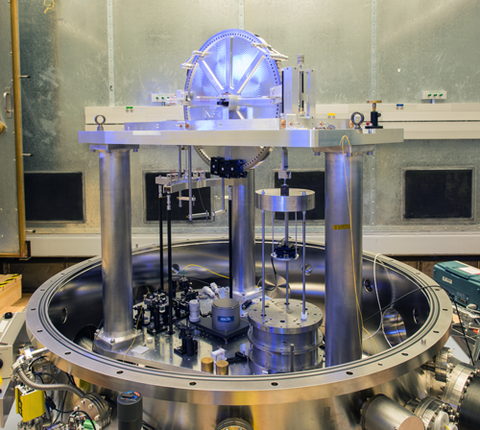
New NIST watt balance, open for assembly and testing. In its final operating configuration, it will be covered and operate in vacuum.
Very soon, the International System of Units (SI) may be revised to define the unit of mass in terms of a fixed value of the Planck constant, h. That move would end more than two centuries of dependence on an artifact standard kilogram that is very difficult to transfer and the mass of which drifts over time.
It is not immediately obvious how mass is related to h, which is the constant used to determine the energy of a quantum mechanical entity such as a particle or wave. It is perhaps most familiar in the context of light, in the formulation E = hν, where E is energy (in joules) and ν is frequency.
Mass, of course, does not appear explicitly in that equation, nor in the currently accepted value of the Planck constant: 6.62606X × 10−34 joule second (J·s), where X is the final digit to be determined.
In an INFORMATIVE AND ENGAGING ESSAY, Jon Pratt, leader of the Fundamental Electrical Measurements Group in PML's Quantum Measurement Division, explains the relationship between h and mass, shows how mass can be measured using that relationship, and places the subject in the larger context of redefining the SI.
This essay appears in the March 2014 issue of Measure, a journal published by the National Conference of Standards Laboratories International (NCSLI).

